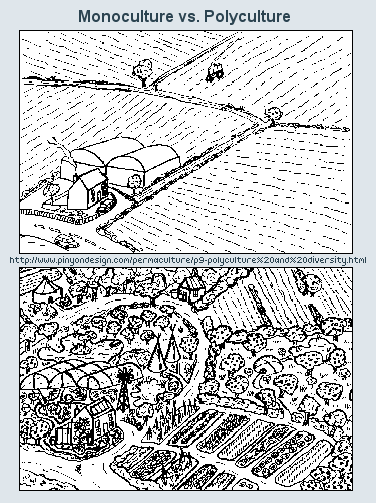 in the problem, machines do one task, and they do it very well, thus crops were converted to one type. Robots, with their complete automation and artificial intelligence, can do many things very well. This means robots can handle diversity and, at the same time, improve efficiency and productivity.
in the problem, machines do one task, and they do it very well, thus crops were converted to one type. Robots, with their complete automation and artificial intelligence, can do many things very well. This means robots can handle diversity and, at the same time, improve efficiency and productivity.
We begin our design of the robot with the design of the field. Instead of planting one species of plant over thousands of acres, our field will include multiple plant species, a polyculture. This biodiversity, in itself, will greatly reduce the need for pesticides and fertilizers. Historically, pests were controlled temporally by rotating crops, which disrupted the life cycle of the pests [3]. This was replaced with the monoculture and its chemical control. In this design, pests are controlled spatially and temporally by blocking their spread throughout the field with different species and varying the composition of the field over time. Hence, pesticides will no longer play the primary role in pest control. The biodiversity of a natural community results in a closed nutrient cycle. By mimicking the nutrient cycling of a diverse natural community, the use of fertilizer will be reduced. A minimal amount of fertilizer will have to be used to compensate for the removal of nutrients through harvesting. This fertilizing will be done by the robots and described later.
In addition to minimal amounts of fertilizing, the field will be equipped to irrigate in an intelligent way. The three major current methods of irrigation are surface irrigation, sprinkler irrigation, and microirrigation [6]. Which method is used will depend on the local context. However, irrigation poses the problem of "when" it is necessary to irrigate and "how much" to irrigate. The information to answer such questions is obtained in the following part of the solution.